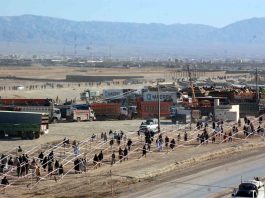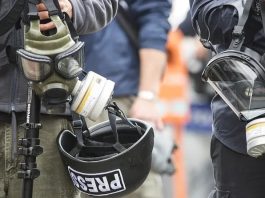KANDAHAR CITY (Pajhwok): Education officials said on Tuesday lack of school buildings, less number of teachers and a shortage of text books have slowed down the education process in southern Kandahar province.
Deputy provincial education director Auz Nazari told Pajhwok Afghan News during an interview that the most serious issue was the lack of school buildings.
“In Kandahar City and districts nearly 60 percent of schools have no buildings and students in these schools study in the open or under tents,” he said.
Calling the current strength of teachers as insufficient, the official said Kandahar needed another 800 teachers to be appointed.
He said there had been 105 classes of 12th graders in the previous academic year in Kandahar City and districts and this academic year 25000 out-of-school children would be enrolled which meant the addition of 900 more classes. Therefore, he said hundreds of teachers needed to be appointed.
Calling schools which have been closed for various reasons as another serious issue, Nazari said 147 of the total 307 schools across Kandahar had been shut.
He said though the security situation had recently improved, they could not reopen closed schools due to the absence of local expert teachers.
He added many schools had been closed in remote areas due to the lack of teachers. “If we ask teachers in Kandahar City and other areas to work in remote areas, they demand high salaries which we cannot afford,” he said.
However, he said they had been able to reopen nearly 30 schools last academic year and would try to reopen some more such schools this academic year.
The official said there were no schools in two districts — Arghistan and Shorabak — of Kandahar’s 17 districts due to insecurity, remoteness and the lack of local experienced teachers, depriving about 20,000 children of education.
Nazari also talked about the shortage of textbooks and teaching materials, saying class 7th, 8th and 9th students faced the shortage of textbooks and that efforts were being made to resolve the problem.
Besides discussing problems, the deputy education director also informed about their preparations for the next academic year. He said they had carried out a series of activities while taking advantage of the three-month summer vacations.
He said they had chalked out plans for schools in Kandahar City and districts to identify needs of teachers and appoint them in various capacities in line with their academic background.
He said nearly 600 students had been trained in various disciplines and work on their capacity-building had been done during the vacations.
He said the campaign to enroll about 25,000 out-of-school children during the new academic year had been launched earlier compared to the previous years.
This academic year, the official said 10 schools would be equipped with modern technology and in this regard, 164 teachers from these schools were being trained.
He said in areas, where long distances prevented children from going to school, 200 classes were being arranged. In addition, he said, the buildings of 26 schools were being repaired and provided with clean drinking water systems.
To a question about the existence of ghost schools in some districts, the official acknowledged his department had monitoring problem in some districts and the problem of such schools would be resolved with the help of tribal elders and security departments.
He confirmed receiving complaints about ghost schools in the Maroof district. To resolve such issues, he said, they had the plan to open schools in areas which could be accessed and monitored by the education department.
Nazari urged the Ministry of Education to provide salaries to teachers in remote areas through mobile phone networks in order to prevent corruption.
About privately-run schools which charge huge tuition fee despite low education standards, the official said they were increasing monitoring of private schools.
He said there were 25 private schools in Kandahar and the education department was trying to ensure that qualified teachers were appointed in these schools.
The current strength of students in Kandahar stands at 260,000 which will increase to 285,000 with the enrollment of 25,000 out-of-school children.
These students are taught by 5,278 teachers, including 900 female teachers.
Kandahar is one of Afghanistan’s warmer provinces where the nine-month academic year starts in September and in the colder areas in March.




